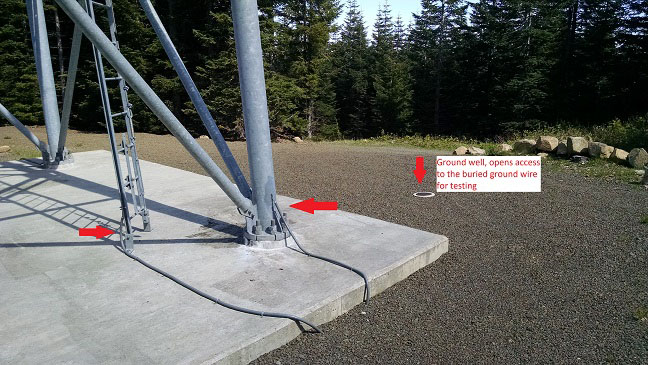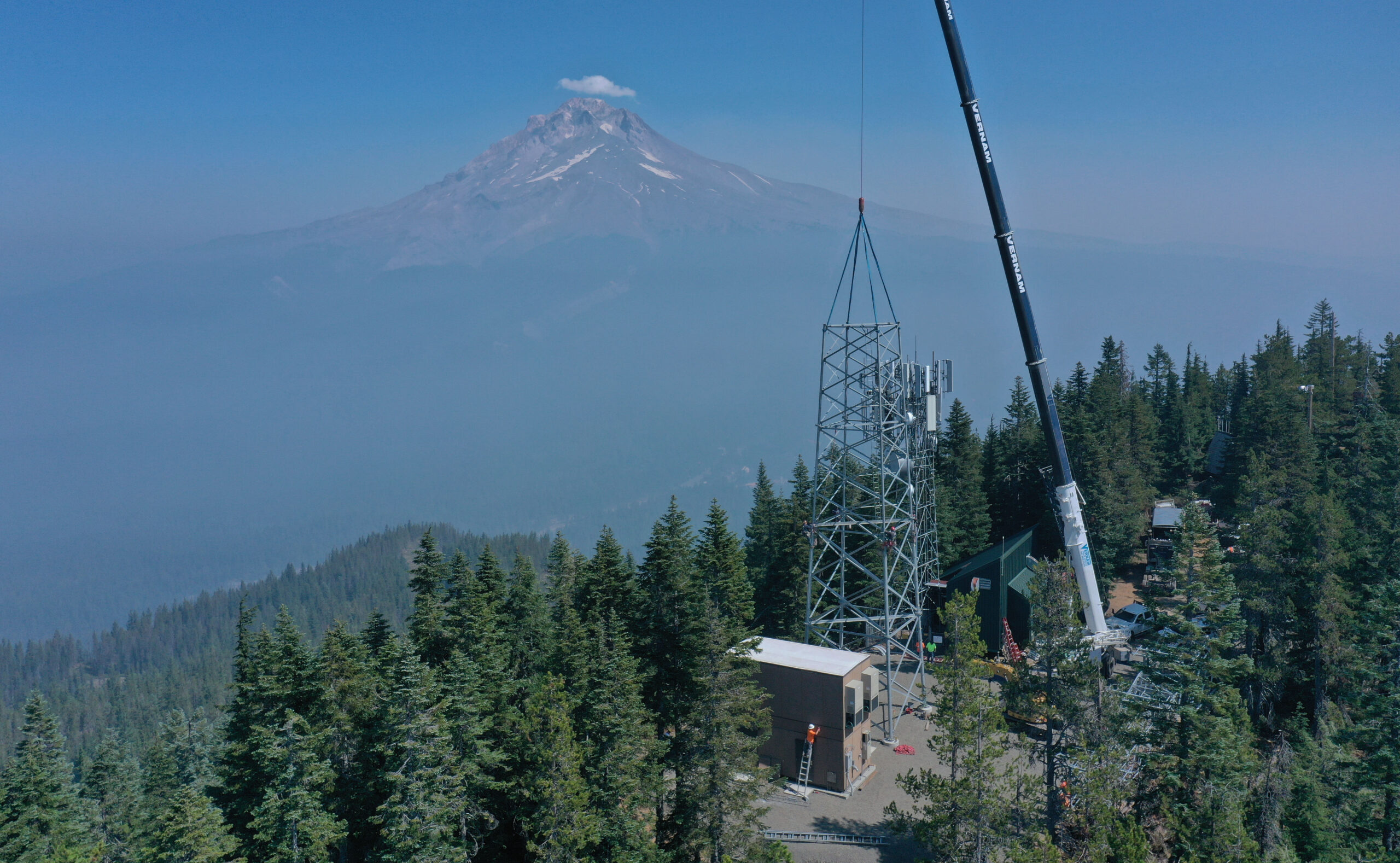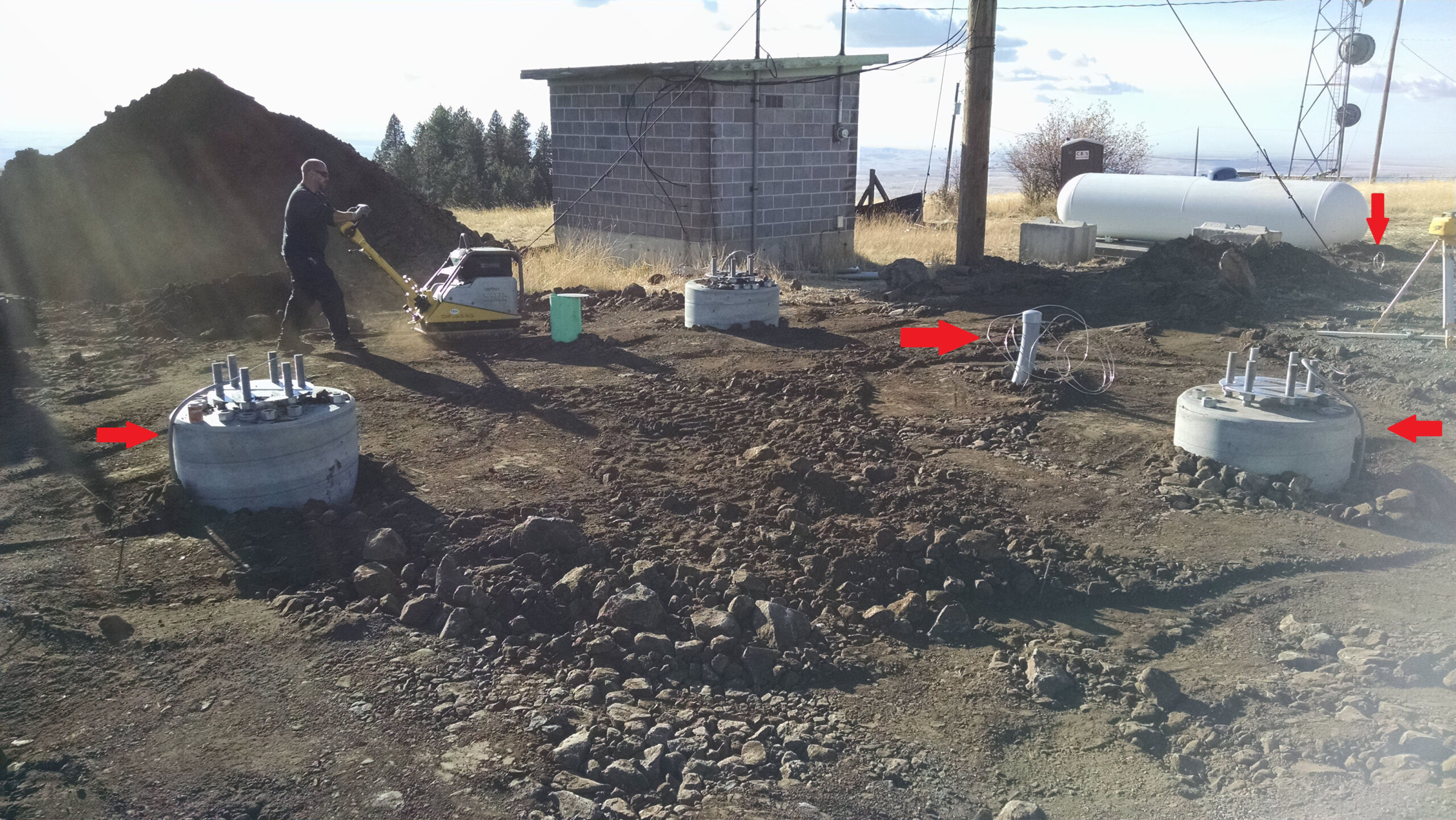Day Wireless Systems (DWS) stands at the forefront of the communications and tower industry due to our expertise in the equipment as well as the rules and standards that govern them. One example is the understanding and complex application of site grounding and bonding principles in communications equipment, particularly for the multitude of requirements grounding towers and their surrounding equipment and infrastructure.
To ensure its long life, meet equipment warranty requirements, and ensure personnel safety, Motorola created its R56 standard. Vital in constructing and maintaining communications towers, shelters, and equipment, Motorola ensures its partners, including DWS, take extensive training and certification for R56. In many cases, other communications providers and government agencies such as Washington Labor and Industry (WAS 296-32) base their standards on R56. In working with multiple equipment manufacturers and communications providers, our expertise in this area sets us apart in the industry due to our ability to navigate not only the R56, but to layer other complex configurations made by other providers.
We spoke with Day Wireless Systems own Safety Manager, David Lindsay, and seasoned radio technician, Steve Wynne, to glean insights from their experiences with the R56 standard and how the standard impacts DWS operations.
Understanding the R56 Standard
The R56 standard is a comprehensive set of guidelines for the installation and maintenance of communications equipment, emphasizing grounding and lightning protection. It provides a theoretical framework for constructing safe and efficient communication infrastructures, focusing on reducing interference and risks from electrical surges. Municipalities and various communications companies often use the R56 standard as a reference point, adapting its principles to formulate their own safety and installation protocols. This widespread adoption underscores its significance in ensuring the reliability and security of communication systems.
It serves as a theoretical framework, often intersecting and sometimes conflicting with previous standards. Despite these complexities, the R56 standard is crucial in ensuring the safety and efficiency of communications infrastructure.
The Importance of Grounding and Lightning Protection
One of the key aspects of the R56 standard is its detailed approach to grounding. “Through our experience, DWS recognizes that every metal component, including fences and other structures, can create interference,” says Wynne. “The standard advocates for attaching a metal post (usually a tinned-copper wire halo) underground to form a ground sink, significantly reducing interference and lightning risk. This approach is not just about grounding the tower itself but involves creating a comprehensive grounding system that encompasses the entire site.”
DWS technicians are aware of the risk that comes from utility, communications cabling and other outside vectors can have on a communications shelter. “Lightning and other surges don’t have to directly hit your tower or shelter to damage equipment,” Lindsay emphasizes. “Strikes nearby can be induced on inter-shelter cabling and, if those are not protected, can severely damage systems. Scenarios like these are partly anticipated by R56, but in many cases rely on the foresight and expertise of technicians, and as a result, it’s extremely rare that DWS has to service anything with lightning damage.”
DWS’s leadership in the industry can be attributed to our extensive knowledge and practical application of the R56 standard. We have been instrumental in building communications sites that adhere to these guidelines. Our focus extends beyond just grounding; it encompasses site surveys, insulation quality, and adherence to various codes like NFPA for overall safety and efficiency.
Grounding in Detail
Grounding is more than just a safety measure; it’s a way to ensure seamless current flow between equipment. DWS employs sophisticated grounding techniques, like installing ground rings with copper rods. Conductivity of soil is taken into account. Solid rock still needs a ground rod, but it may be chemical. Ground rods are generally spaced every eight feet, connected to each other and all on-site equipment with wire, and ensure everything is connected to ground to mitigate damage from lightning strikes or other electrical surges.
Sites requiring grounding are typically a tower or tall structure. Grounding could also apply to a building, like an emergency dispatch or a data center, anywhere current flows from one box to another. If that current can’t flow properly, equipment can get damaged or people can get hurt. The tower itself can become an antenna or reflector. Grounding bonds everything together so it all rises or falls with the surge and there’s no damage or harm caused.
Passive Intermodulation (PIM)
Passive Intermodulation (PIM) is another critical aspect addressed in the R56 standard, playing a role in maintaining the integrity and efficiency of communication systems.
- Definition: PIM occurs when multiple RF signals mix together at non-linear junctions in a communication system, creating unwanted interference in the form of spurious (false) frequencies.
- Role in Communication Systems: PIM can significantly degrade the performance of a system, leading to poor signal quality and reduced data throughput. It’s particularly problematic in environments with multiple carriers and high-power transmitters.
- Relation to R56: The R56 standard addresses PIM by setting guidelines for the quality of materials and installation practices. It emphasizes using low-PIM components, proper installation techniques, and avoiding scenarios where multiple RF signals could interact and create interference. The goal is to minimize the potential for PIM and ensure the system operates at optimal efficiency.
Real-World Application and Challenges
In practice, the R56 standard impacts DWS across various departments. When constructing a tower site, the expectation is that it will be built according to R56 guidelines. This uniformity is crucial, especially since states like Washington base their safety standards on R56.
“In one instance, an emergency dispatch center took a direct lightning strike,” remembers Lindsay. “Although it definitely shook the on-site crew for a few seconds, and they lost half of a microwave link / PTP outdoor unit, they never missed a call and the people and the majority of equipment inside the building were safe.” Lindsay recalls though this dispatch center was originally put into an earlier standard, it had a good grounding foundation, and our teams have kept upgrading and bonding all new work. “Our service techs received alarms on the equipment but they eventually righted themselves, and in the end only the one link was damaged and had to be replaced.”
However, adhering to R56 can be challenging. “We often encounter situations where customer preferences or standards from different entities like cellular carriers or broadcasters necessitate deviations or specific adaptations of the standard,” Wynne relates. “In these cases, our techs juggle the needs of all clients and their equipment without counteracting each other.”
The Broader Impact of R56 on Day Wireless Systems
R56 is not just a set of guidelines for DWS; it’s a standard that influences every aspect of our operations. From grounding and site construction to cable management and seismic considerations, the R56 standard is integral to ensuring that DWS can deliver safe, reliable, and efficient communication solutions.
Keeping up-to-date with the R56 standard is vital. DWS invests in regular training and recertification for our technicians to stay abreast of the latest guidelines, which are periodically updated to reflect new learnings and technologies.
Why Choose Day Wireless Systems?
Choosing DWS for your communication infrastructure needs means partnering with a company deeply versed in the complexities of electrical and grounding issues of a large array of communications equipment, including towers, DAS, two-way radio, video security systems, dispatch centers and public safety, and data centers. The R56 standard bridges all these systems and services.
Our thorough understanding and application of the R56 standard is a testament to dedication and leadership in our towers and communications installation and service departments. By continually adapting to changes and applying guidelines like R56, DWS not only ensures the safety and functionality of our projects but also sets a benchmark in the industry, demonstrating the importance and benefits of adhering to such comprehensive standards.
Want to get grounded? Contact us to get started.
We have over 200 towers and rooftop sites in the Western US>
Learn about our Service Department>

